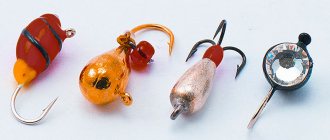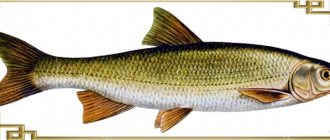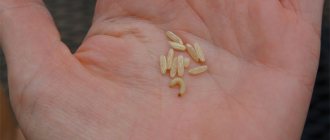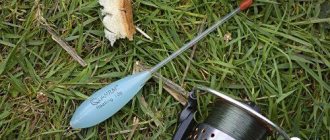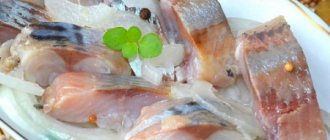What is maggot?
One of the favorite and most common baits among fishermen is maggot. This bait consists of the larvae of various blowflies. Its dimensions can be different - from 4 to 25 mm in length.
There are several types of such bait:
- Magoths . Small larvae of blowflies. Their maximum size is 15 mm. During fishing, this bait is used quite often. Such popularity has appeared due to the durable skin of the larva, due to which it can remain on the hook for a long time. But the negative quality of magota is its immobility and short shelf life in the refrigerator.
- Gordini . The largest variety of larvae is up to 25 mm. They are often used during spring fishing for predatory fish.
- Pinka . The most popular among fishing enthusiasts. The maximum size of such a larva is 1 cm. This type of maggot perfectly attracts underwater inhabitants with its red color, intense mobility and aroma. Pinka can be stored for a long time.
Why do fish bite on it?
This bait is a real delicacy for fish. Despite its small size, it has a high concentration of nutrients.
The larva actively moves under water, if it is correctly placed on the hook, it emits a specific aroma that effectively lures fish. When using such bait there is no need to use additional flavorings.
Biting occurs especially actively in the winter season, when the food diet of underwater inhabitants is very limited in its diversity.
What kind of fish can you catch?
Popular lovers of blowfly larvae are small species
- perch,
- bream,
- rudd,
- crucian carp,
- roaches
If you use it not only as bait, but add it to complementary foods, then there is a possibility of a significant increase in the number of successful bites. And so that complementary foods are not loose, it is recommended to douse them with hot water.
What is the attractiveness of maggots for fish?
The value of fly larvae is their high content of useful microelements, in particular protein. It is especially good to use such bait for catching crucian carp, perch, carp, large roach, rudd, and bream. The main thing is that the bait on the hook looks natural, wriggles and exudes a characteristic smell that underwater inhabitants like so much.
To learn more:
How to make your own chatterbox for fishing
Experienced fishermen have noticed that when the fish are capricious, canned larvae are a good option for attracting them. But you can seduce potential prey not only with bait of the usual color.
To make the bait yellow, just feed it chicken yolk, and red - add the appropriate dye to the food.
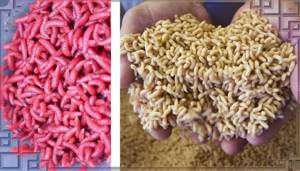
Where to find?
- Purchase at a fishing store. In this case, you should pay attention to several factors, such as: the freshness and mobility of the bait, as well as its cost. In addition, there is a possibility that the store will not have it left.
- Get it yourself . In this case, it is important to know the places where they can be found. Most often, such places are already decomposed meat or fish carcasses, as well as areas in manure or in an outdoor toilet. Of course, the catch is not so pleasant, but the process of fishing promises to compensate for all the disadvantages of the catch.
- Breeding bait in special conditions. This may require some time and a place distant from the family, for example, a summer house.
There are several breeding options:
- In a meat product. Here the main component is meat or fish. You will also need a container - a saucepan or a deep cup and sawdust. The meat should be placed in the sun for several hours, while watching for flies to land on it and lay eggs. After this, the meat with fly larvae is placed in a previously prepared container, at the bottom of which there is a small layer of sawdust. Next, you should take the container somewhere away, for example: to the barn. You can forget about meat for about a week. During this time, a large amount of your favorite bait will form in the dishes, which will emit a terrible smell.
To get rid of decomposed meat and aroma, you can put maggots in clean sawdust and go fishing.There is another way to reproduce it in meat. To do this, any meat product must be buried shallowly in the ground. After a week, you can use the emerging larvae for their intended purpose.
- In an egg . The ideal product for breeding maggots is a hard-boiled egg. A small hole should be made in its upper part, about a centimeter in diameter. There is no need to take anything out of the shell. The cooked egg is left until fly eggs appear in it. It is advisable that it be in a warm place where many insects can fly. After a few days, you can see that the egg no longer contains either white or yolk, but will contain maggots necessary for fishing.
- In the silo. An excellent place for breeding is a silage pit. Flies constantly lay their eggs in this place, so it is easy to find there. The advantage of bait from silage is that there is no putrid smell and you don’t have to do anything yourself. They are distinguished by their color - from gray to green - which attracts the attention of fish well. The disadvantage of this breeding is their low mobility.
How to plant maggot
Among the methods of putting larvae on a hook, you should choose the one that suits the specific fishing conditions. It is not always clear to novice fishermen how to properly attach maggots. The most popular methods are as follows.
Traditional method
This option for putting larvae on a hook involves the following steps:
- Take the live bait and press down lightly to prevent it from slipping out.
- Insert the sting from the side of the maggot's head just under the skin and quickly move it out. The optimal distance between punctures is up to 5 mm.
The classic method of baiting is suitable for catching crucian carp, bleak, verkhovka, roach, rudd, and perch.
Nozzle along
The technology is used more for large-sized fish: carp, asp, sabrefish. For this:
- insert the point of the hook through the thickest side of the bait;
- bring it out in the middle of the bait body.
To learn more:
Using makukha for fishing
All actions should be performed quickly and carefully so as not to touch the insides of the maggot. The “along” method is universal and can be used both for catching small fish and for hunting trophies.
A combination of the traditional method and along
Often during fishing, the larva covers the tip of the hook with its body and the fish is not hooked. To correct this point, you must first plant one larva using the “along” method, and the other two using traditional technology.
Bundle attachment
Four maggot larvae are strung on the hook from the thin side. There is still a risk that the bait will break, but the likelihood of damage to the insides of the bait is minimized. The bunch instantly attracts the attention of fish, including predatory ones.
"Sandwich"
In this design, in addition to larvae, other baits are used: corn grains, red worms, etc. The principle is to plant several types of bait, where maggots are the last to cling.

Option from athletes
This method of attachment with the tip exiting in the middle requires certain skills. First, the bait is placed horizontally, and then the hook tip is inserted under the skin from top to bottom in the center of the body.
Unhooked
This method of attaching maggots is used when fishing with wire. The bait is placed vertically upward and the sting is threaded through the head area from top to bottom.
ring
To catch careful prey, the following option for stringing the larvae is used:
- A puncture is made in the head of the bait.
- The tip is inserted into the tail part.
Breeding at home: pros and cons
Flaws
If you are completely ready to independently breed this bait, you should pay attention to the following disadvantages:
- The smell that appears during breeding is very unpleasant - the aroma of rot, rotten meat. In addition, it can spread over several tens of meters, which can cause discontent among family members or neighbors.
- Before using prepared bait, it must first be removed from the container in which it is located. Because of the smell, this is extremely difficult to do, so it is advisable to purchase a respirator.
- If you don't keep track, you can lose the result of your efforts. Black beetles love to eat fly larvae. Therefore, it is recommended to cover the container with them with newspaper on top.
pros
But despite all the disadvantages, there are still advantages to home breeding:
- To create maggots at home, you do not need to have any special skills or materials.
- The entire breeding process takes a short period of time - approximately 7 days.
- This activity can become a kind of business . Moreover, it is quite in demand, since not every store can get your favorite bait.
How to hook?
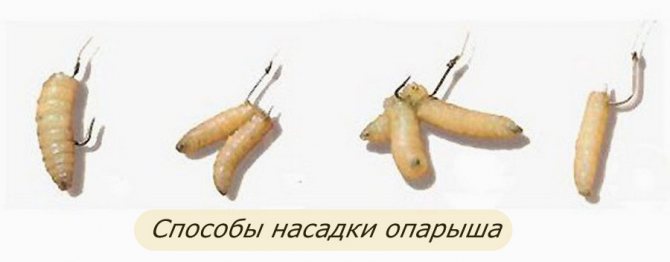
Thanks to its thick skin, the maggot is easily placed on the hook and stays on it for a long time. But this property of the bait can also be attributed to its disadvantages, since when biting, the fish may not be hooked, and accordingly the tackle will remain empty. Therefore, it is advisable to put the maggot on the hook along its entire length. But fishermen also use several other options:
- Traditional way . The larva should be firmly grasped with the fingers of your left hand so that the head of the maggot is at the top. The head is the slightly blunt, thickened end of the bait. The hook is threaded into the thick skin area under the head without touching the muscle area. If you are fishing for small specimens, then the maggot can be divided into two parts.
- Reverse planting method . In this case, the maggot is put on the hook on the other side of the head, that is, with the thinner and sharper end of the larva. Often several maggots are placed on the hook at once, but at least 3, so that the larvae do not get confused with each other. This method of planting maggots is used when catching large trophies.
- In the middle part of the larva. In this case, the hook penetrates the bait into its middle. According to experienced fishermen, this method ensures a more natural position of the maggot in the water. The downside here is the frequent replacement of bait.
- A method of mounting a larva that prevents snagging on underwater obstacles . When the larva is used for wiring, it is difficult to prevent snags on stones, snags or vegetation at the bottom of the reservoir. In this case, it is convenient to use this method of attaching maggots, where several larvae are put on a hook, the last of which serves as a kind of “stocking”.
- Sandwich . In this case, in addition to the maggot itself, other attachments are also used, for example, bloodworms or a worm. In this case, it is the maggot that is put on the hook first, since it has the thickest skin. Using this method of attaching larvae, you can catch many large individuals.
Hook color
The color of the hooks is only important when fishing in clear water. You should not use colors that contrast with the background of the bait.
We recommend: Review of the RUSH 24 tactical backpack from the company 5.11
| Hook color | Where to use |
| Red Blue | With bright baits, such as bloodworms |
| Gold or silver | When fishing with light-colored bait, such as maggots, cereals |
| Black | When fishing in areas with a dark bottom |
Ways to properly store fly larvae
Of course, fishing enthusiasts who often use such bait are well aware of how to store it.
- If the bait was purchased in small quantities relatively recently, then there will be no problems with its storage. Maggot can be stored in the refrigerator for a long time.
The bait should be placed in any container or jar and kept in the cold for several minutes, and then closed with a lid and put in the refrigerator.This is done to prevent moisture from forming in the jar from the heat. It is generally accepted that at a temperature of zero degrees, maggots can be stored for a longer time.
- If you need to store a large amount of maggots, you should use a slightly different method. This is where a tall plastic container comes in handy. The larvae are poured into it in a layer of no more than 2 cm and covered with a thin layer of sawdust or bran - 3-5 cm. The lid can not be used here, since the bait will not spread, but will remain under the surface layer. An important point during such storage is that once every 10 days it is recommended to sift the entire container, and replace old sawdust or bran with fresh ones. Using this storage method, the bait will remain fresh and suitable for a long time.
- If maggots pupate, you should not throw them away immediately. They can still be useful during fishing, but not as bait, but as an effective additive to complementary foods. Such maggots can be preserved very simply - fill them with water.
Tips and tricks when fishing
By using blowfly larvae as bait or bait, you can ensure high-quality and active fishing, but you should pay attention to a few more recommendations:
- It is necessary to ensure that the maggot is always alive on the hook. Since fresh bait is nimble, it actively attracts the attention of underwater inhabitants.
- The type and size of the hook depends on the method of installation and their quantity. But it is also worth considering the fish that is being hunted.
- If there has been no bite for a long time, then it is worth checking the condition of the maggot and, if necessary, replacing it.
- When using it with other bait, the grub should be at the very bottom, and the point of the hook should be hidden by another softer bait.
- It cannot be stored or kept in the same place with other types of bait and groundbait.
Despite the availability of new interesting and effective baits, both natural and artificial, maggots always remain popular among fishing enthusiasts. This bait is easy to use, can be used to catch any fish, which confirms its versatility, and maggots are also easy to find or breed yourself.
Thanks to the use of fly larvae as bait or an addition to complementary food, the hunt for underwater inhabitants promises to be active and exciting, and not a single fisherman will leave the reservoir with “empty pockets.”
Methods for attaching a worm to a hook when fishing for various types of fish
The choice of method for attaching a worm to a hook depends on several factors. First of all, this is the type of fish and its size. Catching crucian carp with a worm is classic in terms of using this bait. The most practical way to catch this fish is to rig a worm with a stocking. When trying a delicacy, the crucian carp does not prick the hook and, not feeling a catch in the bait, sucks it up without any suspicion.
A bunch of worms is an excellent choice when fishing for bream and catfish. The only difference is the size of the nozzle. Putting a dung worm or underleaf on bream is more effective. The catfish, of course, crawled out exactly what was needed.
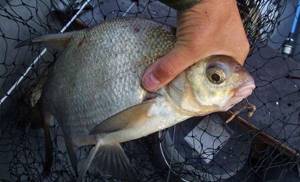
Carp and carp are caught by rigging a hook with a worm using the ring or figure eight method. This method completely cuts off the small things from the bait, since it will only be available in bulk form for large fish.
Worm pieces are used to catch small fish, roach, rudd, bleak and gudgeon. This method is great for quickly catching live bait for further catching predatory fish.
Important! A fishing trick that helps in activating the bite is a small break in the tail of the worm. In this way, the speed at which the scent of the bait spreads increases, thereby attracting more fish to the fishing spot.
Based on the above recommendations, we can conclude that proper worm attachment is the key to a successful fishing strategy.


